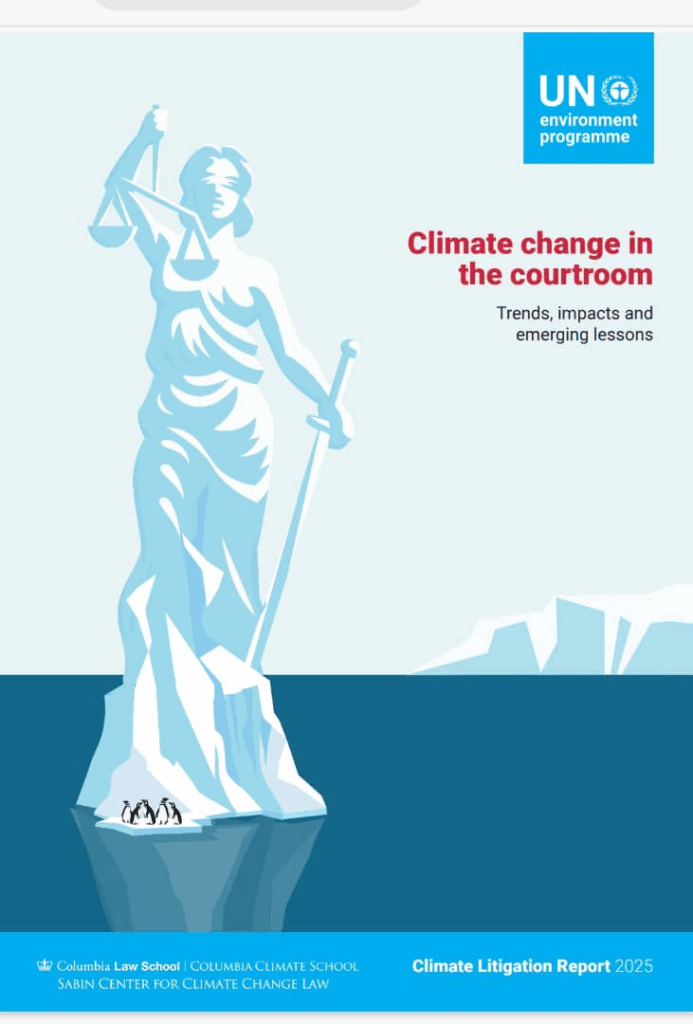3,099 climate cases filed worldwide as litigation becomes a global tool for climate action

As of 30 June 2025, 3,099 climate-related cases have been filed in 55 national jurisdictions and 24 international or regional courts, tribunals, or quasi-judicial bodies, according to a new report by the UN Environment Programme (UNEP) and the Sabin Centre for Climate Change Law at Columbia University.
The report shows a steady rise in climate litigation: 2,180 cases in 2022, 1,550 in 2020, and 884 in 2017. While cases from the Global South still account for less than 10 per cent, their share is gradually increasing.
Since the first recorded climate litigation case almost four decades ago, the field has expanded and matured.
Today, litigation covers nearly all aspects of climate governance, with similar trends now emerging in related crises such as biodiversity loss and pollution.
The findings suggest that climate litigation is now being pursued in more countries than ever before.
The report also highlights how lawsuits are tackling issues such as greenwashing, carbon offsets, and energy-intensive data centres.
The publication, titled Climate Change in the Courtroom: Trends, Impacts, and Emerging Lessons, is the fourth edition of the series launched in 2017.
It draws on data from the Sabin Centre’s Climate Change Litigation Databases to examine key trends, ongoing cases, and landmark court rulings.

Executive Director of UNEP, Inger Andersen, described climate litigation as an effective global tool for advancing climate action and accountability.
“Transforming our energy, mobility, housing, and food systems must be a collective effort, through ambitious and science-based policymaking. Independent judicial systems are essential to ensuring this transformation is both just and effective,” she said.
The report also points to significant rulings, including the recent Advisory Opinion of the International Court of Justice, which clarified states’ obligations in addressing climate change.
Courts are increasingly acknowledging the scientific basis for climate claims, including attribution science that links specific extreme weather events to greenhouse gas emissions.
According to the report, these rulings are shaping global norms and obligations.
At the same time, the 78-page report warns of a rise in anti-climate litigation, cases aimed at rolling back environmental protections or weakening environmental, social, and corporate governance (ESG) in investments.
Of particular concern is the increase in lawsuits against public opposition to high-emitting projects, often targeting climate advocates, journalists, and civil society groups.
“These cases underscore that the terrain of climate litigation is not uniform, and the interests of plaintiffs are not unidirectional. Rather, climate litigation is a complex and diverse field that shapes and contests the global response to climate change.
“The field involves a multiplicity of actors, forums, legal strategies and outcomes. Significantly, climate litigation as a field is becoming a model for other climate-adjacent fields such as plastics and biodiversity litigation,” the report notes.
DISCLAIMER: The Views, Comments, Opinions, Contributions and Statements made by Readers and Contributors on this platform do not necessarily represent the views or policy of Multimedia Group Limited.
DISCLAIMER: The Views, Comments, Opinions, Contributions and Statements made by Readers and Contributors on this platform do not necessarily represent the views or policy of Multimedia Group Limited.
Source link





